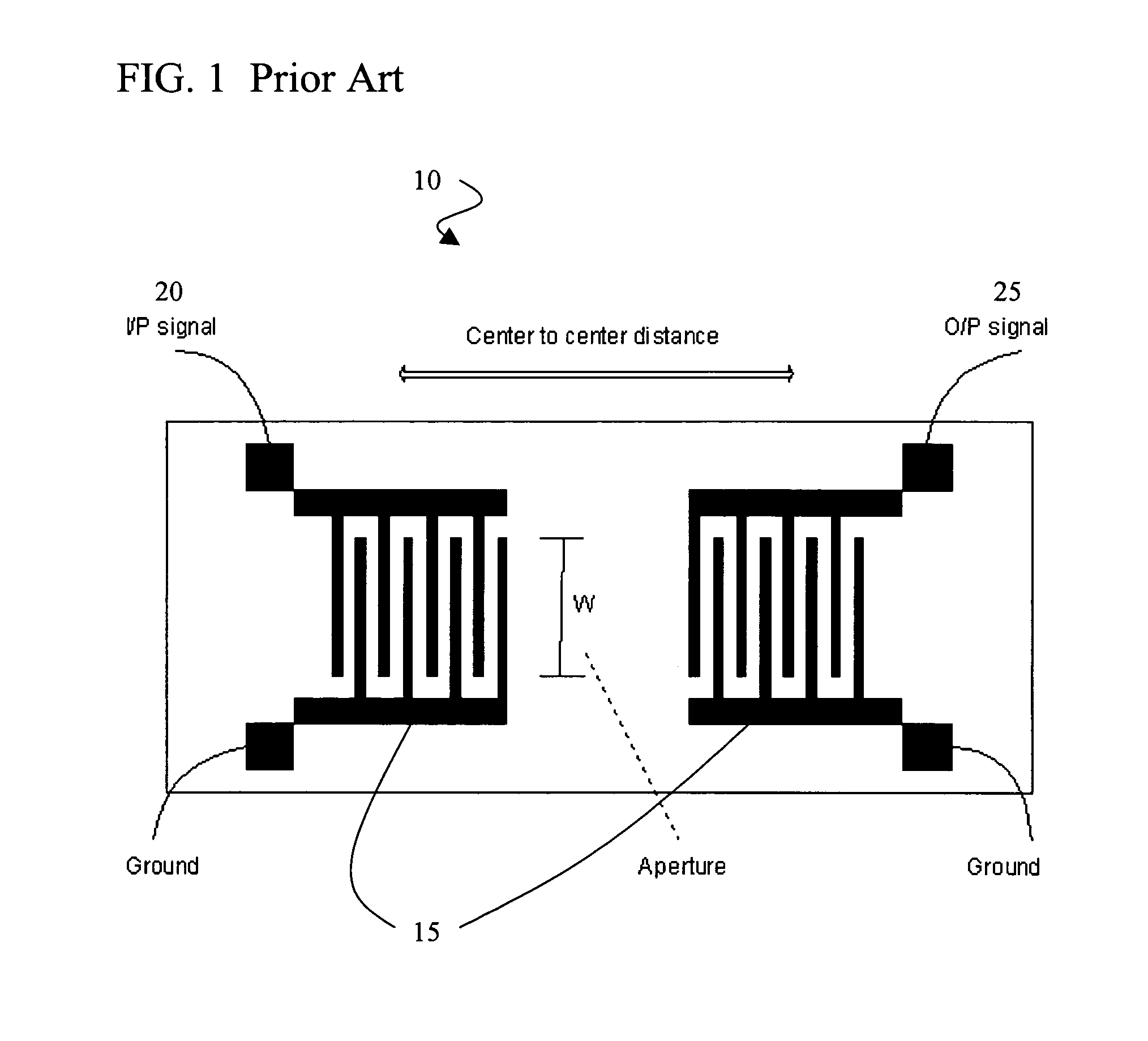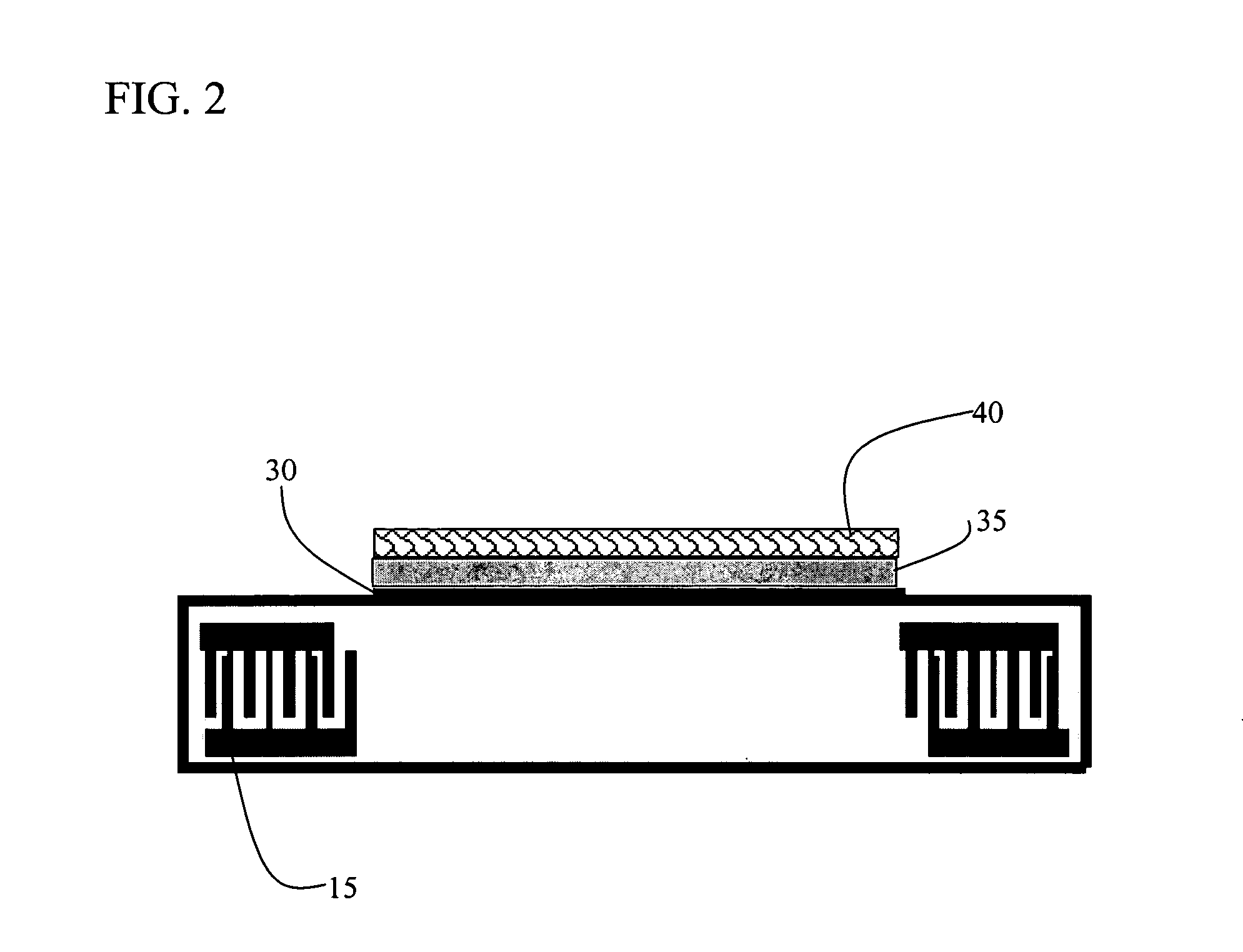Surface acoustic wave hydrogen sensor
a surface acoustic wave and hydrogen sensor technology, applied in the field of surface acoustic wave hydrogen sensor, can solve the problems of high power requirements, high operating temperature, and the rise of the storage of this gas
- Summary
- Abstract
- Description
- Claims
- Application Information
AI Technical Summary
Benefits of technology
Problems solved by technology
Method used
Image
Examples
example
[0046]The table of FIG. 4 provides the independent parameters for the SAW device of this exemplary embodiment.
[0047]The complete characterization of an acoustic wave device is always obtained from a complete frequency response spectrum including all the scattering parameters. Scattering parameters (S-parameters) are the set of parameters describing the scattering and reflection of traveling waves when a network is inserted into a transmission line. S-parameters are normally used to characterize high frequency networks, where simple models valid at lower frequencies cannot be applied. S-parameters are normally measured as a function of frequency.
[0048]For each port, the incident (applied) and reflected wave properties are measured. When the incident wave travels through the network, its value is multiplied (i.e. its gain and phase are changed) by scattering, thus giving the resulting output value. S-parameters can be considered as the gain of the network, and the subscripts denote th...
PUM
 Login to View More
Login to View More Abstract
Description
Claims
Application Information
 Login to View More
Login to View More - R&D
- Intellectual Property
- Life Sciences
- Materials
- Tech Scout
- Unparalleled Data Quality
- Higher Quality Content
- 60% Fewer Hallucinations
Browse by: Latest US Patents, China's latest patents, Technical Efficacy Thesaurus, Application Domain, Technology Topic, Popular Technical Reports.
© 2025 PatSnap. All rights reserved.Legal|Privacy policy|Modern Slavery Act Transparency Statement|Sitemap|About US| Contact US: help@patsnap.com



